Our Research
Carbon Implications of Forest Restoration
Determining current-day forest ecosystem carbon balance is key to managing for future forests. However, little research evaluates how forest carbon pools change when largely unmanaged and fire-excluded forest stands undergo restoration treatments (e.g., thinning and repeated fire) to return them to historical ecosystem states. To address this knowledge gap, we are assessing whole-ecosystem carbon stocks across southeastern U.S. forests, including coastal and montane longleaf pine, mixed pine-hardwoods, and upland hardwood forests.

Flammability of Fruiting Structures
We are investigating the role that various fruiting structures (e.g., pine cones and sweetgum balls) and fruits (e.g., acorns) at different densities and in different combinations impact fire behavior using experimental field plots.

Ecology of Urban Forest Natural Areas
Urban forests experience many stressors, including encroachment of invasive plants, loss of foundation species, and densification. We are studying how these factors interact to influence regeneration of desired tree species by impacting seed predation and seedling establishment. Eric Bridges (PhD student) is working at Overton Park in Memphis, TN using both greenhouse and field experiments. Students from Rhodes College have been helping him.
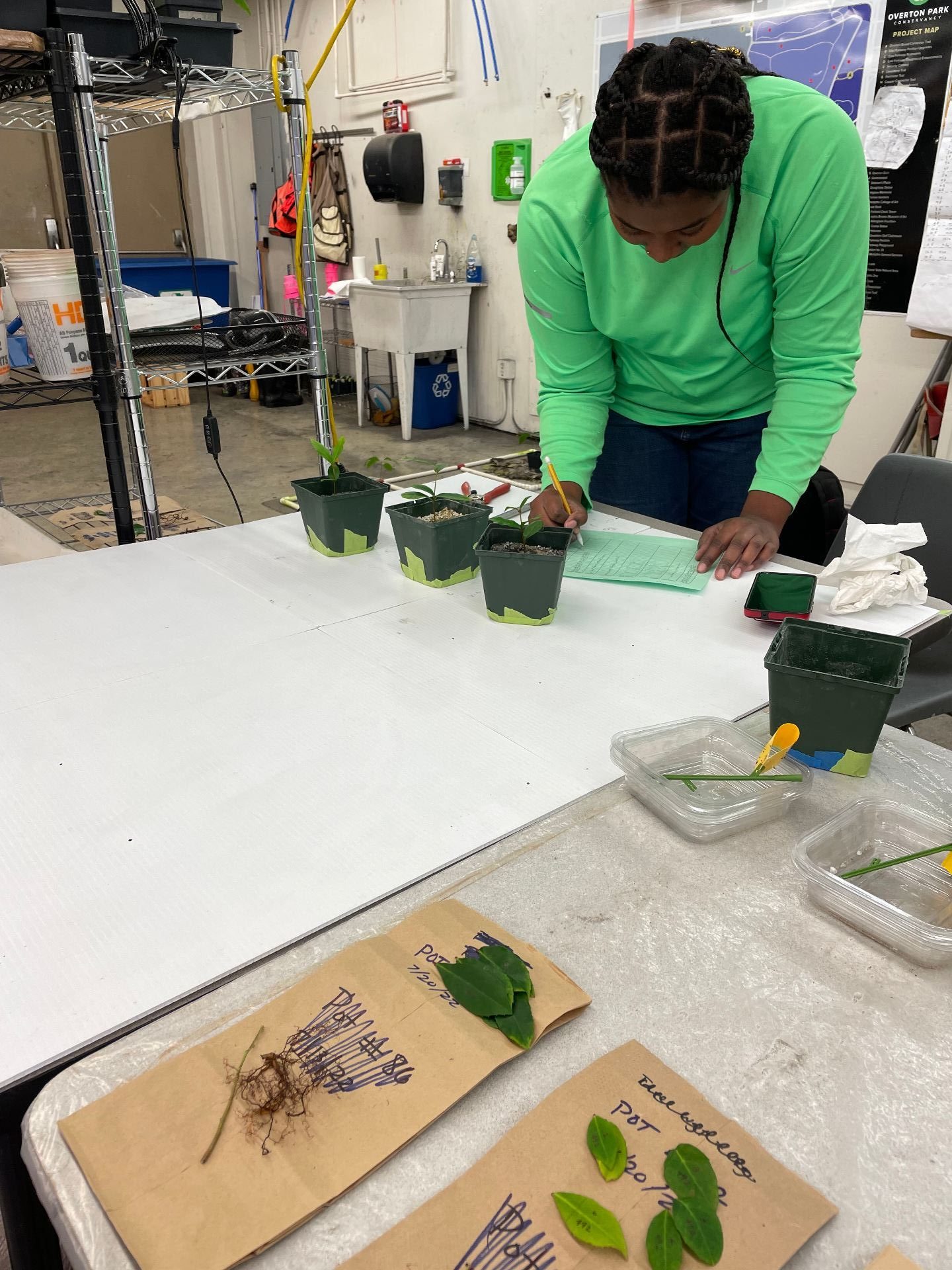


Carbon implications of wind damage in fire-managed forests
Many southeastern U.S. forests are fire-dependent and require frequent, low-intensity prescribed fires to preserve biodiversity, limit competition from undesired plant species, provide habitat for threatened and endangered species, and increase productivity and long-term C storage capacity. Most studies accounting for prescribed fire impacts on C balance in southeastern forests indicate that increased productivity and transformations in soil organic matter resulting from regular low-intensity fires act to offset or exceed the temporary pulse of C into the atmosphere during fire, allowing many forests to continue to act as C sinks. Yet, wind disturbances like hurricanes and tornadoes that generate large fuel inputs compromise effective and safe management of these forests with prescribed fire, thereby increasing the potential for unintentional catastrophic wildfires with currently unknown consequences for C sequestration capacity of these forests. Thus, there is a critical need to understand the factors that protect and expand southeastern U.S. forests’ capacity to act as C sinks and that help foster forest resistance and resilience to climate change and associated disturbances like hurricanes. We aim to address that need by collecting empirical, field-based data characterizing above and belowground C pools, fuel loads, and fire behavior across a subset of fire-managed, wind-damaged southeastern forests.
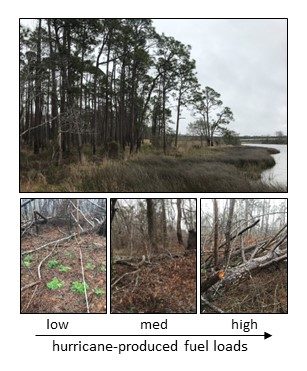
Pyrophyte vs. mesophyte leaf litter flammability traits across gradients of regional climate and fire history
Historically pyrophytic and open-canopied pine and oak savannahs and woodlands of the southeastern U.S. are transitioning to more mesophytic, closed-canopy forests in the absence of fire and canopy-opening disturbances. In response, land managers often implement prescribed fire, sometimes in combination with other silvicultural techniques (e.g., thinning), to restore desired composition and structure. However, restoring fire to these historically fire-maintained landscapes requires flammable leaf litter fuels, which are often the primary fuel source in fire-maintained woodlands and forests, to promote fire ignition and spread under conditions typical for prescribed fires. However, leaf litter fuels may exhibit low flammability due to compositional and structural changes that impact fuel bed properties, limiting our capacity for fire restoration. Thus, understanding variability in leaf litter flammability across species, climate, fire histories, and microenvironmental conditions (e.g., understory light) could help us predict potential for restoration success using fire and when and where fire must be combined with other silvicultural techniques to restore and maintain desired pyrophytic landscapes.

Functional ecology of pyrophytes and mesophytes of upland mixed forests
The primary objective of this study is to contrast the functional traits and regeneration strategies of the early growth stages (i.e., seedling/sapling) of pyrophytes and mesophytes of various species under increasing degrees of mesophication (i.e., time since last fire disturbance) across a latitudinal gradient of sites with varying climates and fire histories. The main idea is to explore how morphology and physiology vary across species and environments. By assessing this information, we can better understand to which degree management techniques are aligned with the species requirements.
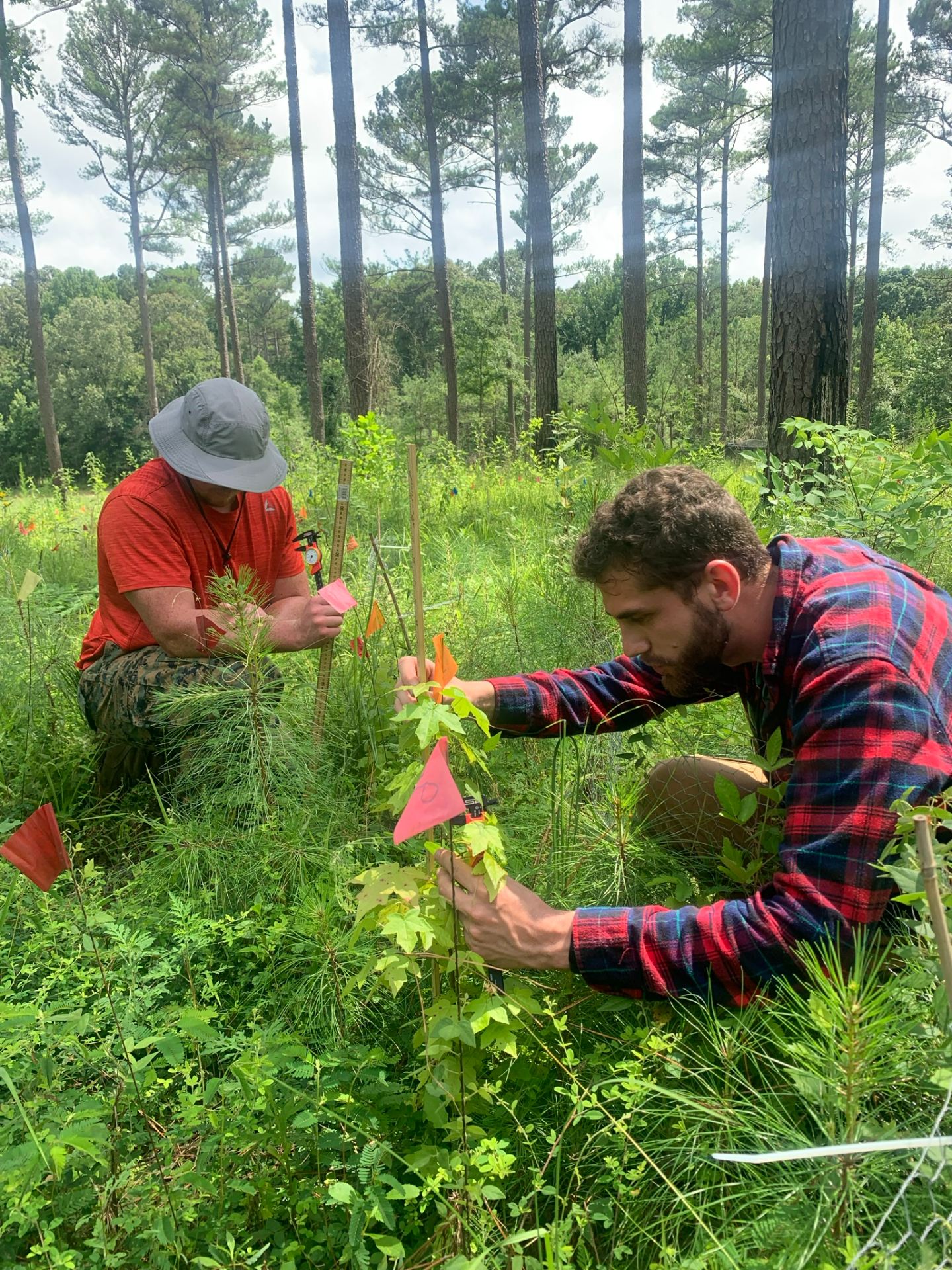
Impacts of restoring fire to coastal pine forests on seed viability of invasive Chinese tallow
Our research asks: How does fuelbed composition, seed location in the soil profile, and canopy structure influence tallow seed viability and germination rates? The proposed work is significant because there is currently no information on the role of fire on tallow seed viability. Tallow invades by seed, and prescribed fire is commonly used in these systems to maintain or restore desired forest composition and structure. Thus, understanding whether fire impacts tallow invasiveness would address a major knowledge gap in the literature surrounding the use of prescribed fire in biologically invaded ecosystems.
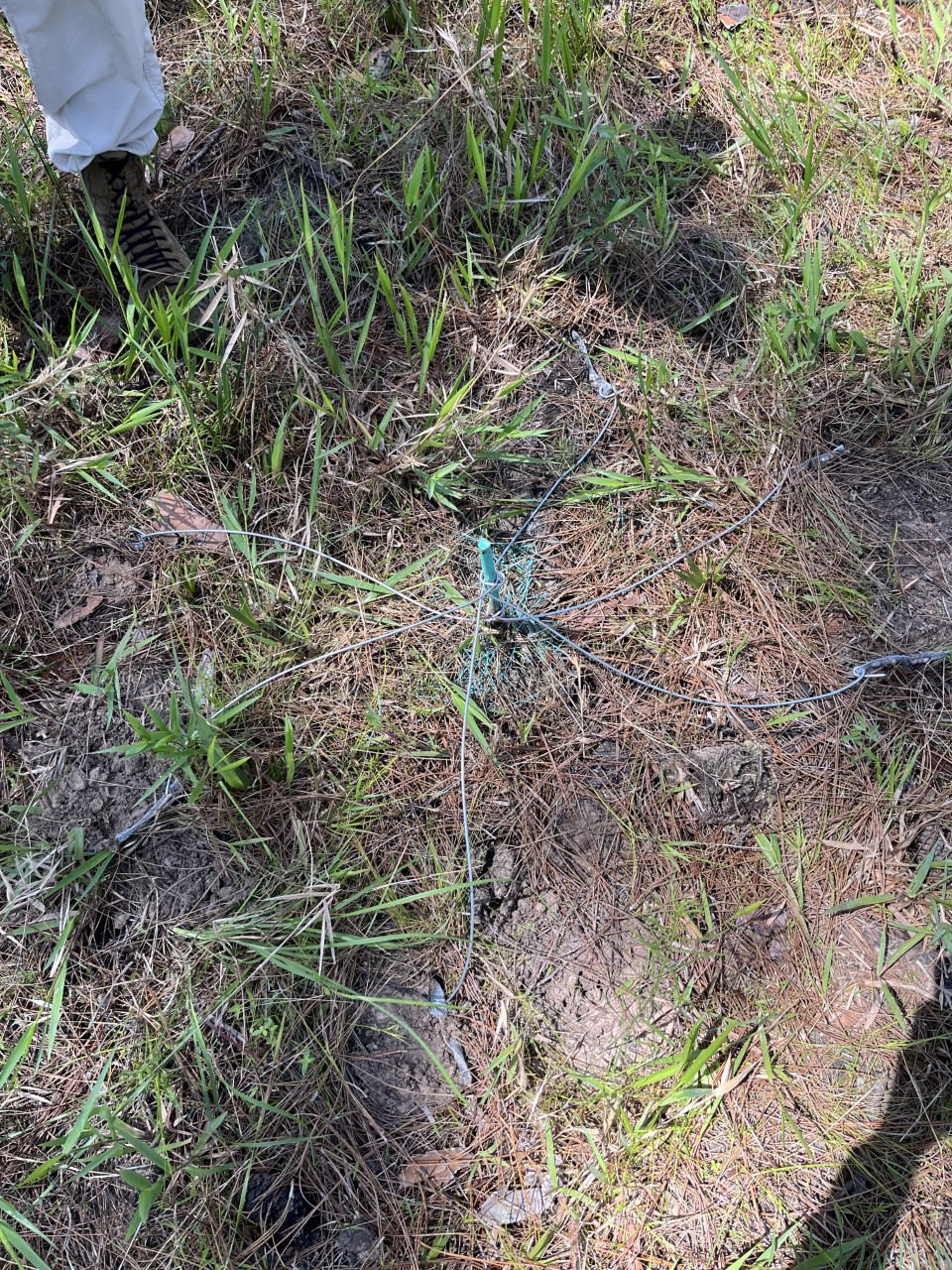
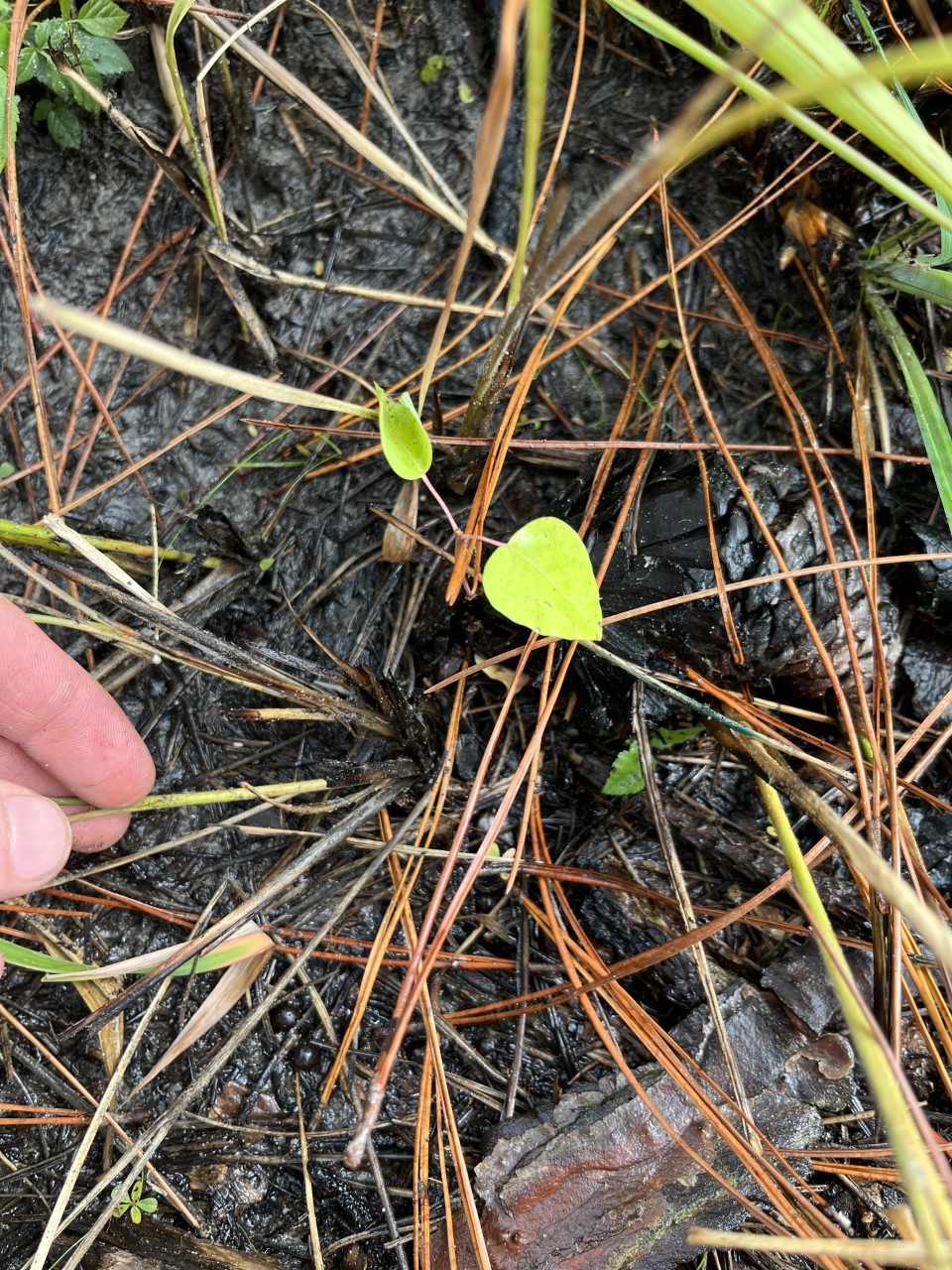
Overstory tree influence on microclimate, fuels, fire behavior and tree regeneration
Upland oak (Quercus spp.) and pine (Pinus spp.) landscapes across the southeastern U.S. depend on frequent, low-intensity surface fires to sustain an open structure and high understory floral diversity. However, decades of intentional fire exclusion, combined with logging and land use conversion for agriculture, have allowed shade-tolerant, often fire-sensitive species (referred to as “mesophytes”) to spread into these ecosystems. Once established, mesophytes are hypothesized to hinder native fire-dependent flora (i.e., pyrophytes) through shading effects and by suppressing fire ability to move through the ecosystem. In response, prescribed fire is a commonly used management tool to limit mesophyte encroachment and promote pyrophytic flora. However, we have little data documenting the effects of mesophytic trees on regeneration of native pyrophytic flora or fire behavior. Thus, our primary objective is to compare native flora regeneration, understory conditions, and fire behavior beneath overstory individuals of pyrophytic longleaf pines, pyrophytic upland oaks, and mesophytic oaks. More specifically, we aim to: 1) quantify microclimate conditions associated with regeneration and fire behavior, including air temperature, relative humidity, light intensity, and soil moisture; 2) measure the loading and composition of potential fuels including leaf litter, native herbaceous vegetation, and woody debris; 3) evaluate fire behavior through assessments of rate of spread, temperature, and fuel consumption; 4) determine the density and composition of native tree regeneration.

Characteristics and conditions influencing longleaf pine seed production, size, and southern pine germination rates
Successful natural regeneration of fire-dependent longleaf pine ecosystems of the southeastern United States requires viable seed sources. Yet most studies focus on cone production, a relatively easy measurement, with little understanding of whether seed production, size, and viability mirror cone production, which may be decoupled at high cone production levels. Seed quality, litter accumulation, competing vegetation, and climate influence germination and establishment after seedfall; however, little is known about how longleaf pine seeds respond to variations in soil temperature and moisture compared to three other co-occurring southern pine species. We are addressing these knowledge gaps by collecting longleaf pine seeds from trees with known cone counts, conducting a germination trial with collected seeds, and conducting a germination trial using the major southern pine species with increasing soil temperature and decreasing soil moisture treatments. Identifying the relationships between cone production, seed production, seed size, and germination rate will provide managers and landowners with a better method of predicting the success of natural regeneration efforts in their longleaf pine stands. Knowing how seeds respond to variations in soil temperature and moisture is important due to predictions of increases in soil temperature with climate warming and the impacts of management activities, such as prescribed fire and thinning, on soil temperature and moisture.
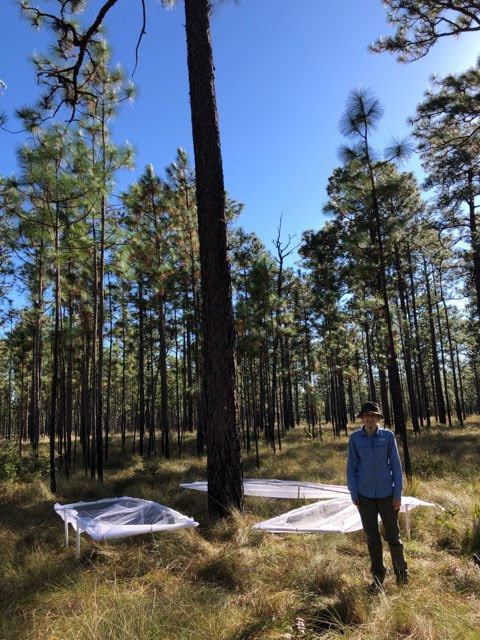
Management strategies for improving thornscrub forest restoration
Thornscrub forests are being fragmented and lost at alarming rates with a variety of ecological consequences for soil stability, carbon cycling, and wildlife habitat. Our research objectives are to (1) determine empirical relationships between thornscrub seedlings and their abiotic and biotic environments, and (2) use these relationships to predict seedling success under different management strategies, including herbicide, herbivore exclosures, and seedling shelter tubes. Findings are being used to establish monitoring protocols and baselines for detecting the growth and spread of restored thornscrub habitats and to create mechanisms that help managers use project findings in an adaptive management approach.

